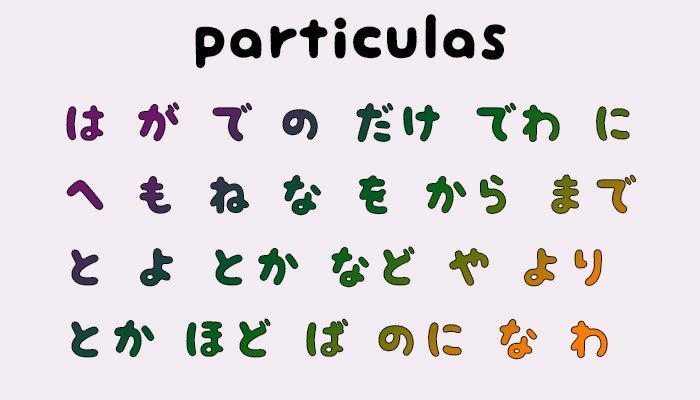The particles in the Japanese language are amazing. They make the language simpler, more direct, and easier to understand, but sometimes they can complicate things.
One point that confuses many people when learning nihongo is the particles は (wa) and が (ga). They have similar functions and this can cause a real "bug" in the head. Today, we will try to explain the difference between these two particles so that you will never be confused again.
Table of Content
Basic summary
The particles は and が are super important in Japanese. You will use them all the time in almost every sentence. In summary:
- The particle は (wa) is used to mark the topic of the sentence.
- The particle が (ga) is used to mark the subject of the sentence.
Now that you know this, have you solved your problems? Probably not. This explanation of "topic" and "subject" may seem a bit confusing, after all, the two terms are very similar.
Many people say that you will understand the difference between が and は over time, but who wants to wait that long? We want to understand now! Let's go, but keep in mind that this requires a basic knowledge of the Japanese language.

The real difference between は and が
Let's talk a little more about what each particle does:
Particle は (wa)
- Mark it topic from the sentence.
- It is used when something has already been mentioned before or is familiar to both the speaker and the listener.
- Indicate contrast or emphasize the topic.
- Although it is written with the hiragana は (ha), it is pronounced "wa".
- It appears after a noun to indicate that something will be said about it.
- It can indicate contrast between two items or show a limit number.
Particle が (ga)
- Mark it subject from the sentence.
- Used when a situation or event is presented for the first time.
- It also connects two sentences, with the meaning of "but."
- Can indicate the object of a subordinate or relative clause.
- It can be used to soften a statement or refusal.
Essas explicações podem parecer muitas informações, mas não se preocupe, o foco principal é entender a diferença básica: wa marca o tópico e ga marca o sujeito. Mas o que é exatamente essa diferença?
Topic x Subject: What does that mean?
Topic (は)
The topic is the general "subject" of the conversation, something that has already been mentioned or is known by both the speaker and the listener.
- When to use は?
- To compare two things.
- When you are giving general information.
- When talking about people or abstract ideas.
Subject (が)
The subject is what is directly related to the verb, that is, who performs or suffers the action.
- When to use が?
- For neutral statements that focus on specific information.
- To describe physical things or point out something specific from a group.
Example Phrases
Example 1:
(1) 猛男さん が イチゴを 食べました。
(2) 猛男さん は イチゴを 食べました。
Both sentences mean "Mr. Takeo ate the strawberry." The difference lies in what is emphasized:
- In the first sentence, the particle が emphasizes. who ate the strawberry (Takeo).
- In the second sentence, the particle は emphasizes. what was eaten (the strawberry).
Example 2:
(1) これ が 臭い です (kore ga kusai desu)
(2) これ は 臭い です (kore wa kusai desu)
Both mean "This is stinking," but:
- The sentence with が emphasizes that this specifically it's what stinks.
- The phrase with は emphasizes the the act of stinking, without focusing so much on the object.
Example 3:
(1) 私 が 行きます (watashi ga ikimasu)
(2) 私 は 行きます (watashi wa ikimasu)
Both mean "I'm going," but:
- In the first sentence, with が, you are standing out, as if saying: "I'm the one who will go."
- In the second sentence, with は, you are simply informing that you are going.
Example 4:
(1)このボールペンが赤です。(Kono bōrupen ga akadesu.)
(2)このボールペンは赤です。(Kono bōrupen wa akadesu.)
This pen is red
Mais uma vez, o primeiro exemplo, que usa a partícula "Ga" esta enfatizando a a caneta e não a cor dela. É como se a frase quisesse dizer: "EEEEssa caneta é que é a vermelha!!!" (e não aquela caneta).
Enquanto a partícula "Wa" esta tentando dizer: "Essa caneta é VER-ME-LHA!!!" (e não azul)
De forma simples podemos concluir que: A partícula Ga esta Enfatizando o que tem antes da partícula enquanto o Wa enfatiza o que esta depois.
Example 5:
Let's take another small example:
- 私はケビンです ( Eu sou Kevin )
- 私がケビンです( Eu
é quesou o Kevin)
Or you can just informally say ケビンです without using any particles;
Wrapping Up
This article only showed a basic view of the difference between the particles は and が. There are still many details that can vary depending on the situation, but understanding that が emphasizes what comes before it and は what comes after will help you a lot. Depending on the context, you will need to decide which particle to use to sound more natural.
Remember: you won't always need to use particles in your answers. Many times, a short answer is already enough!
